Kolkata, Barrackpore and Serampore
This is the third in a series of posts by Prof Peter Stanley, the distinguished Australian military historian, who recently visited several historical sites in India gathering material for his forthcoming book (John Company’s Armies: the Military Forces of British India 1824-57).
This post covers places Prof Stanley visited in Kolkata, Barrackpore and Serampore. Posts about his visits to the Mussoorie and Landour area, and to Lucknow, were published on 18/1/24 and 12/2/24 respectively. Future posts will cover his visits to Gwalior and Jhansi, and to Agra.
Kolkata
From Lucknow I went to Kolkata. There I was able to visit Fort William again, a birthday treat for which I had spent months preparing. The fort is still a major military base – the headquarters of the Indian Army’s Eastern Command – and gaining entrance to such a secure site in the end depended upon the serendipity of who knew whom.
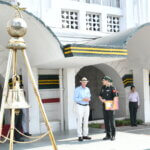
Barracks, 2023
(Photo: Courtesy of P Stanley)
The visit was enjoyable and productive, in that I was able to see and even enter the huge Dalhousie Barracks, completed in 1857 and still in use; the fort’s museum, the former residence of the Commander-in-Chief from the late eighteenth century to when the capital shifted to Delhi just before the Great War, and St Peter’s church, now the garrison library.
A bonus was that while I knew that I could not take photographs, the Indian Army officers who facilitated the visit kindly laid on a photographer from the Goorkha battalion in residence, and so I was able to leave with photographs of many of the memorials erected in the church from the period mostly before 1857.
Barrackpore
I also took the opportunity to re-visit the cantonment of Barrackpore, about 16 kilometres north of Kolkata. This time I was better prepared, and had engaged a local guide who was able to help me locate various buildings and arrange a visit to Government House, now no longer used by the West Bengal Police Academy but preserved as an historic building with a splendidly informative display and film in the old cellars.
I was able to see several places in the cantonment (although access was no longer as free as it had been; see below), including at least viewing from its gate Flagstaff House, the Commander-in-Chief’s summer residence, though not the war memorials (British India’s earliest) in its grounds.
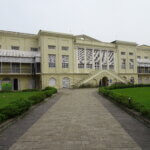
(Photo: P Stanley, 2023)
I had visited Barrackpore cantonment cemetery before, in 2018, and was shocked at how it had deteriorated. The 20 or so Great War CWGC graves, mostly of Terriers, were cleared and accessible (new headstones, added shortly before, already showed signs of weathering) but virtually all other headstones are either overgrown and completely inaccessible or otherwise unidentifiable. Some headstones and crosses here had also been vandalised. I could find very few headstones with legible inscriptions, and yet Barrackpore was an active cantonment for nearly two centuries. The gatehouse, which had been in a seriously dilapidated condition in 2018, however, has been repaired, with a new metal roof. Here, as in virtually all cantonment cemeteries, a family lived in the gatehouse, acting as chowkidars, either formally or informally.
Serampore
While at Barrackpore, at my guide’s suggestion I crossed the Hooghly by ferry to visit Serampore.

A Danish enclave until 1845, it preserves St Olav’s Church (whose memorial inscriptions are all in English), the old Danish governor’s kutcherry (office) and residence, the Denmark Tavern (recently renovated as a cool and stylish eatery) and Serampore College, founded in 1818 by Baptist missionaries who operated the celebrated Serampore press.
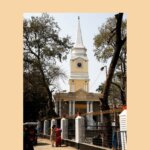
(Photo: Britt Lindemann, 2018)
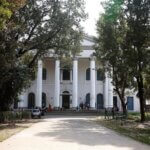
(Photo Britt Lindemann, 2018)
This visit deepened my awareness of the richness of the relationships between European missionaries and India.
Peter Stanley
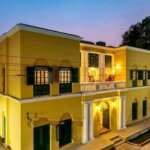

(Established in 1786, Denmark Tavern, Serampore, had fallen into disrepair by 2013. It was reopened in 2018 as a ‘cool and stylish eaterie’ by Peter Taksøe-Jensen, Danish Ambassador to India, following restoration work carried out as part of the ‘Serampore Initiative’ undertaken by the National Museum of Denmark, and funded by Realdania and the West Bengal Heritage Commission – Ed.)
